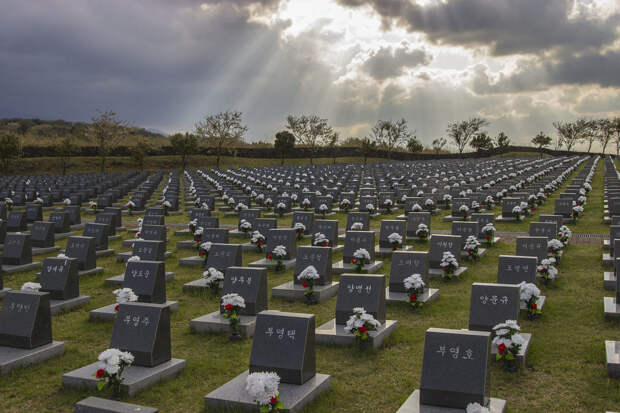Author: Erin Craig / Source: Atlas Obscura

It’s perhaps no surprise that the world’s busiest air route is a nonstop to paradise. Nearly 90 flights a day leave Seoul for Jeju, a semitropical island 60 miles off the southern tip of the Korean Peninsula.
With citrus groves, dramatic black-rock beaches, and waterfalls spilling into the sea, Jeju has earned the nickname “Honeymoon Island” for a reason. But many vacationers today may not remember the time when it had a very different reputation.On April 3, 1948, an uprising pitted Jeju islanders against police, the U.S. military, and the newly formed South Korean government. In the ensuing conflict, up to 30,000 civilians lost their lives, and those who survived were branded traitors and communists. The history of the insurrection, now known as Jeju 4·3, was officially suppressed and then forgotten, before finally reappearing in the national consciousness.
There are, amid the island’s unusual theme parks and beautiful vistas, nearly 800 historical sites related to that period. Most are unmarked, untended, and virtually unknown, and one of the most significant is right where thousands of visitors arrive on the island—a mass grave under a runway of Jeju International Airport.

“As long as you land at Jeju Airport, you land on April 3rd,” says Gayoon Baek, cofounder of Jeju Dark Tours, an NGO that documents and maps these sites.
As a human rights activist, she feels that telling the story of Jeju 4·3 is an important step toward resolving the island’s troubled past—especially given the current climate of reconciliation between North and South.“People were silent for a very, very long time,” Baek says. “I think it is our responsibility to document these places.”
The events of Jeju 4·3 began, ironically enough, with a call for unity. Following the Japanese withdrawal from Korea after World War II, everything south of the 38th parallel, including Jeju Island, fell under the stewardship of the United States, while the Soviet Union maintained influence over the north.

Discouraged by the painful partition, in 1947 the left-wing South Korean Labor Party encouraged nationwide demonstrations for unification. On Jeju, the march dissolved into chaos when police opened fire on a crowd, killing six. Korean police officers then detained, questioned, and tortured Jeju citizens connected to the demonstration. According to the official report of the Truth Commission (formally known as the National Committee for Investigation of the Truth About the Jeju 4·3 Incident), the anger over these heavy-handed tactics transcended political divides, especially after a student died in custody.
On April 3, furious civilians stormed police stations across the island. According to the Truth Commission’s report, U.S. military governor Major General William F. Dean declared—without evidence—that the resulting insurrection and rebel force was led not by islanders, but by North Korean communists. He advocated a scorched-earth policy, which included the involvement of a particularly brutal right-wing paramilitary force, and within months the island was aflame.

Per the commission’s report, entire villages, including women and children, were massacred in surprise raids. More than 2,500 were forced through illegitimate military trials. Those who received a death sentence were shot en masse and buried beneath what would one day become the airport.
Scholar Jong-min Kim, who coauthored the report, states that the United States bears some responsibility for what happened. He points out the August 1948 accord under which the…
The post The Bloody Past of Korea’s ‘Honeymoon Island’ appeared first on FeedBox.